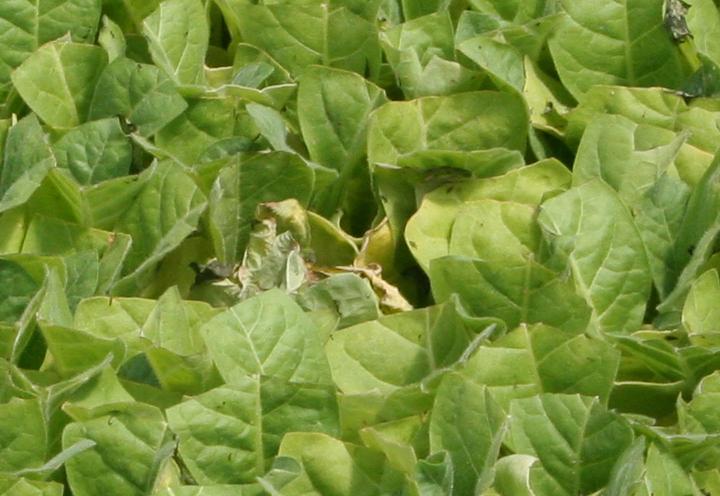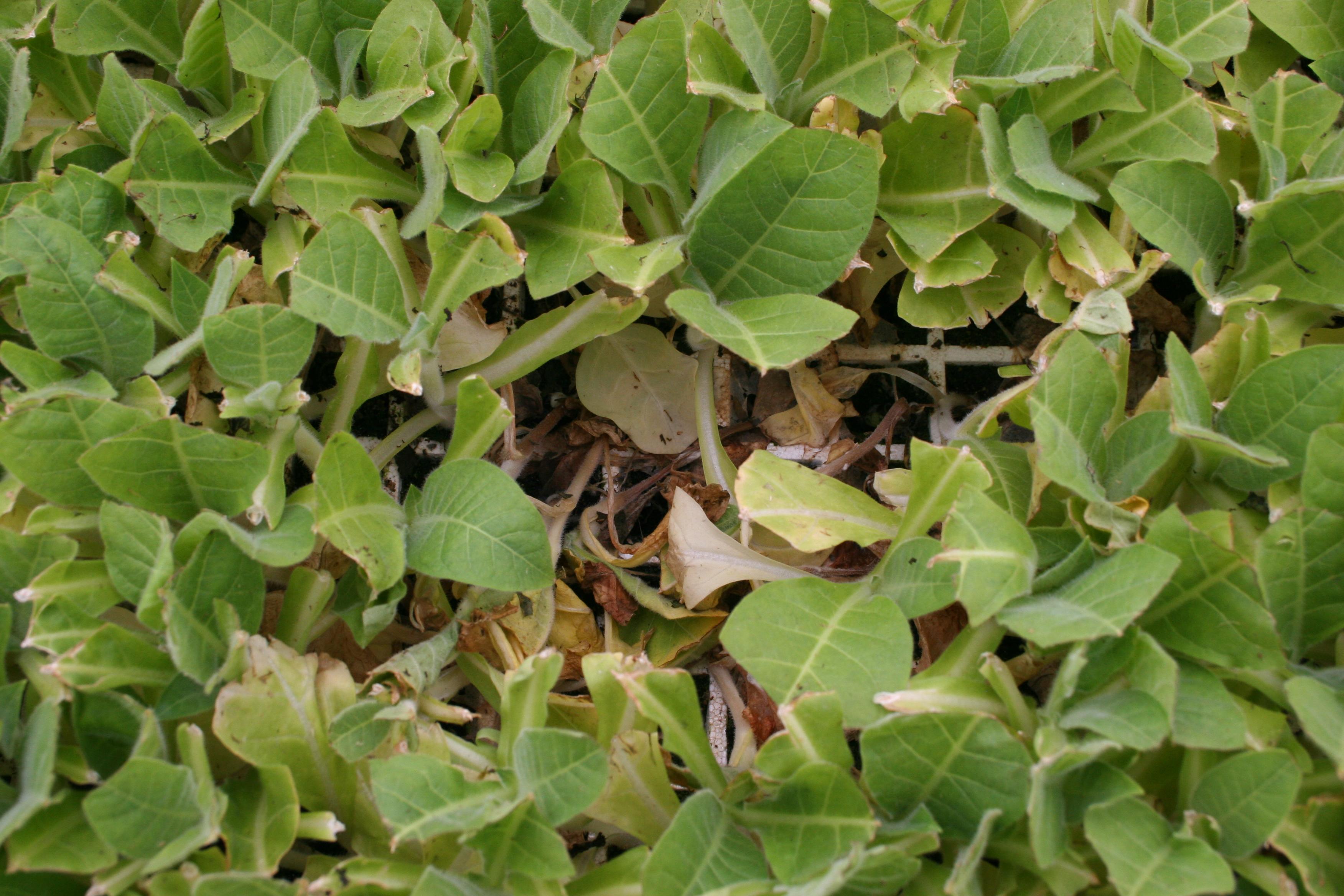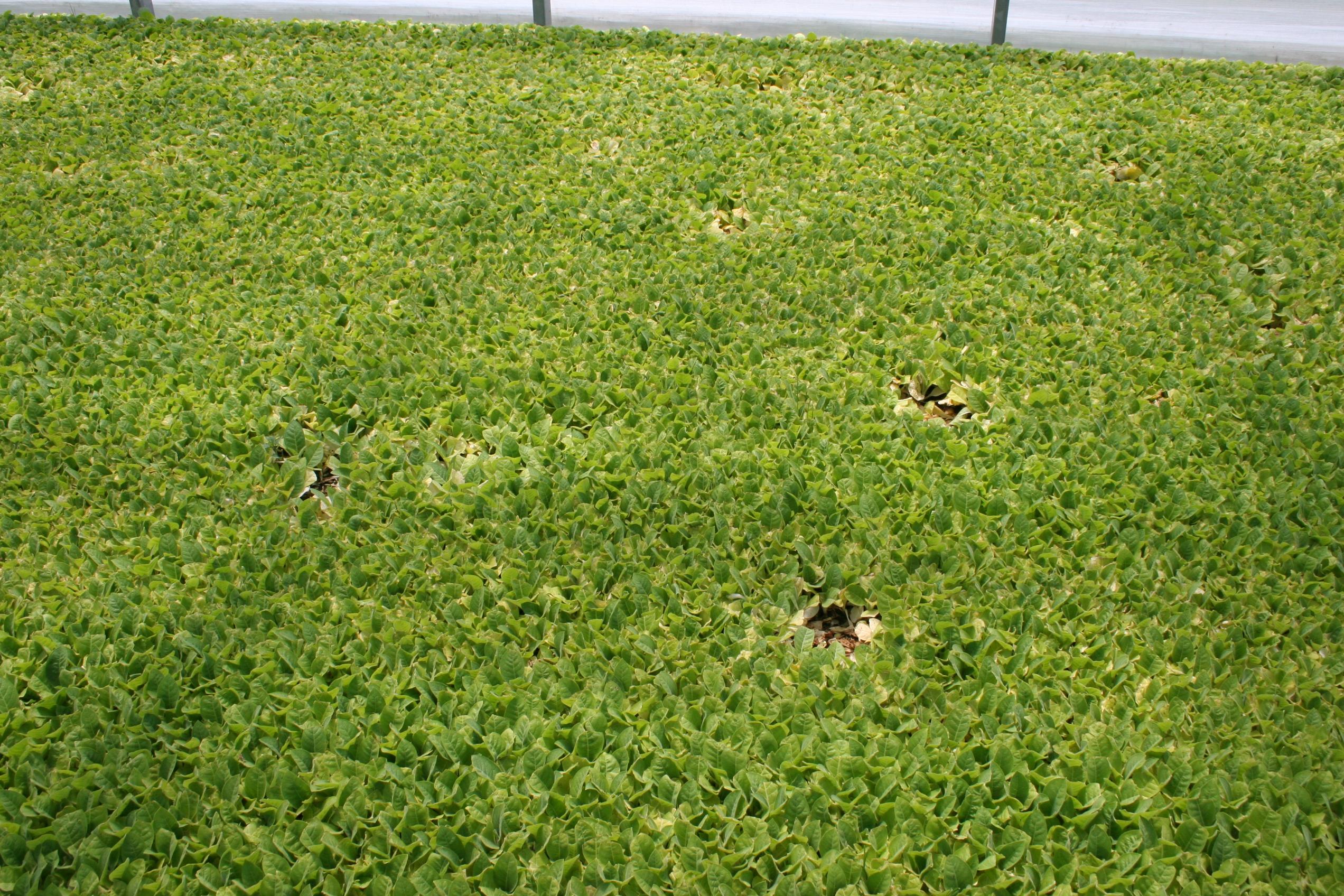Sclerotinia Collar Rot

Collar rot is caused by the fungus Sclerotinia sclerotiorum. Early symptoms of Sclerotinia collar rot include yellowing of leaf tips and flagging of older leaves. (Photo: Kenneth Seebold, UK)
 As disease progresses, plants completely collapse. (Photo: Kenneth Seebold, UK)
As disease progresses, plants completely collapse. (Photo: Kenneth Seebold, UK)
 As plants collapse in clusters and disease spreads, noticeable openings are left in the canopy. (Photo: Kenneth Seebold, UK)
As plants collapse in clusters and disease spreads, noticeable openings are left in the canopy. (Photo: Kenneth Seebold, UK)
 Stems infected by the Sclerotinia fungus become water-soaked and exhibit a dark brown necrosis. (Photo: Kenneth Seebold, UK)
Stems infected by the Sclerotinia fungus become water-soaked and exhibit a dark brown necrosis. (Photo: Kenneth Seebold, UK)
 The Sclerotinia fungus eventually produces dense, white fungal growth (mycelia) on infected tissues. Roundish white tufts of mycelia will develop into irregularly-shaped, hard, black sclerotia, which may range in size from a mustard seed to a raisin. (Photo: Kenneth Seebold, UK)
The Sclerotinia fungus eventually produces dense, white fungal growth (mycelia) on infected tissues. Roundish white tufts of mycelia will develop into irregularly-shaped, hard, black sclerotia, which may range in size from a mustard seed to a raisin. (Photo: Kenneth Seebold, UK)
 Note the small black sclerotium that has developed on the lower stem of this tobacco transplant. Sclerotia are capable of surviving several years of unfavorable environmental conditions. Once favorable conditions resume, sclerotia produce a spore stage capable of infecting plants. (Photo: Kenneth Seebold, UK)
Note the small black sclerotium that has developed on the lower stem of this tobacco transplant. Sclerotia are capable of surviving several years of unfavorable environmental conditions. Once favorable conditions resume, sclerotia produce a spore stage capable of infecting plants. (Photo: Kenneth Seebold, UK)
